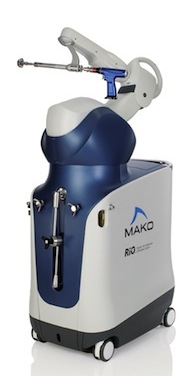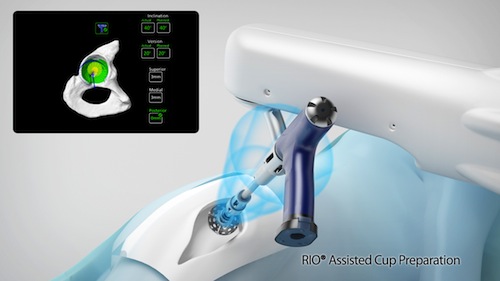 |
 |
 |
 |
|
MAKOplasty® Total Hip Replacement MAKOplasty® Total Hip Replacement is powered by the RIO® Robotic Arm Interactive Orthopedic System. It is indicated for adults who suffer from non-inflammatory or inflammatory degenerative joint disease. The RIO® robotic arm advanced technology allows surgeons to achieve a new level of accuracy. Who is a Candidate for MAKOplasty®?
A candidate for MAKOplasty® Total Hip Replacement may experience the following: • Pain
while putting weight on the affected hip How does MAKOplasty® Work? If your surgeon determines that you are a good candidate for the MAKOplasty® procedure, a CT Scan will be taken of your hip one to two weeks prior to surgery. This is used to create a patient specific 3-D model. A surgical plan is then created for the placement and alignment of the implants before surgery.
During surgery, the robotic arm guides the surgeon in preparing the socket in the pelvis and positions the impants optimally. Real-time information and images allow your surgeon to know and control accurate implant placement, which can be difficult to achieve using traditional surgical techniques without a robotic arm.
|
Conditions & Treatments • ARTHRITIS OF THE KNEE AND HIP • TOTAL
KNEE REPLACEMENT • MAKO
ROBOTIC SURGERY • TOTAL
HIP REPLACEMENT
|
 If
your symptoms aren't responding to non-surgical solutions, or your pain
can no longer be controlled by medication, you may be a candidate for
MAKOplasty® Total Hip Replacement.
If
your symptoms aren't responding to non-surgical solutions, or your pain
can no longer be controlled by medication, you may be a candidate for
MAKOplasty® Total Hip Replacement.